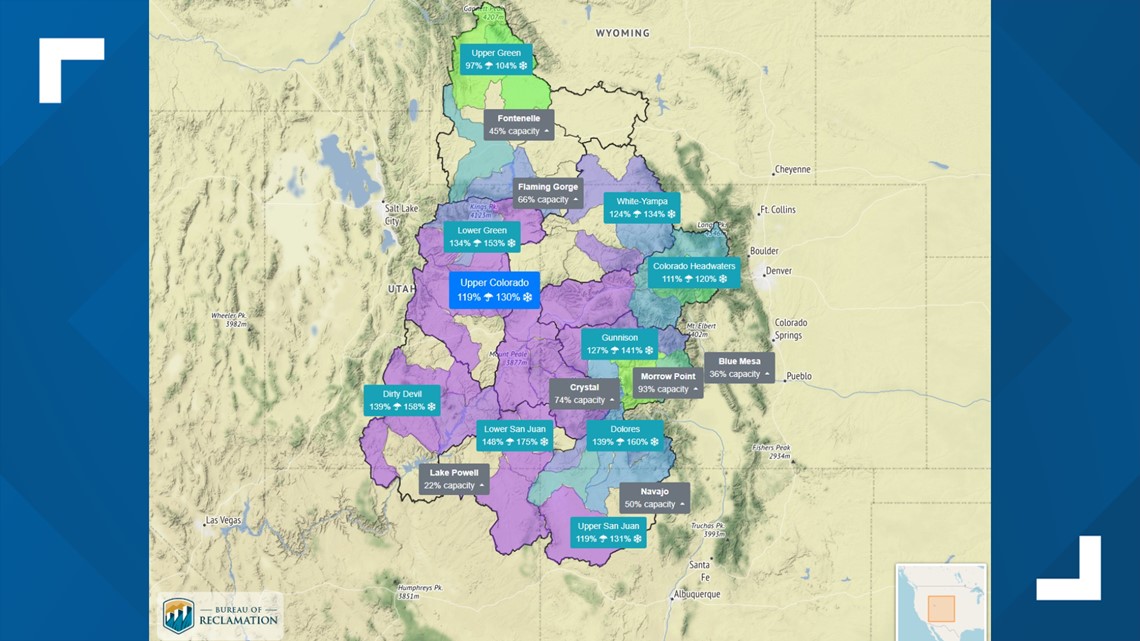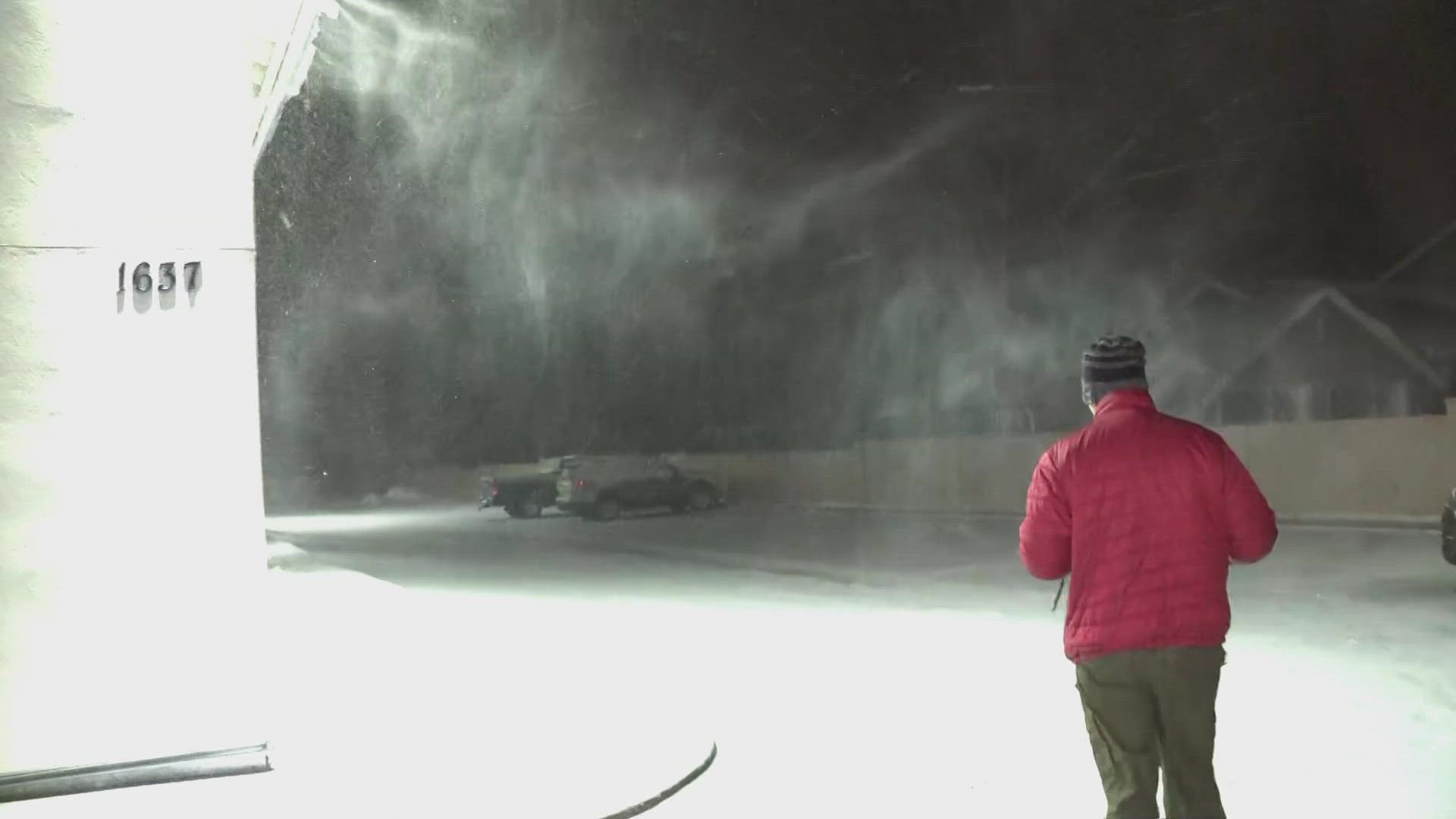ARIZONA, USA — Mountains in Arizona and along the Colorado River have seen white peaks and abundant snowpack in the first few weeks of 2023, according to data from the United States Department of Agriculture (USDA).
Snow that falls in Arizona's White Mountains goes on to melt and flow through the state's eastern Salt and Verde rivers, eventually making its way to Phoenix residents' taps through the Salt River Project (SRP).
How the snowpack will specifically affect the city's water supply won't be known until the snow stops falling around April.
For now, Phoenicians should celebrate the incredibly above-average snowfall the mountains have received since it most likely signals a water-supply boon.
Snowpack on the Verde River Basin was measured at 280% of the date's median as of Friday. The Salt River Basin's snowpack was measured at 144% on the same day.
Flagstaff has seen similar outstanding snowfall recently.
"We did a core sample this evening, and found 8" of liquid," the National Weather Service's Flagstaff branch tweeted. "Pretty impressive, and consistent with the 93" of snowfall that has fallen!"
Reservoirs along the Colorado River didn't see as exceptional of snowfall as Arizona's White Mountains, but areas are still boasting above-average measurements.
The total measurement of all sites north of Lake Powell was measured at 129% of the median snowpack for the date.


Water Wars
Water levels are dwindling across the Southwest as the megadrought continues. Here's how Arizona and local communities are being affected.

